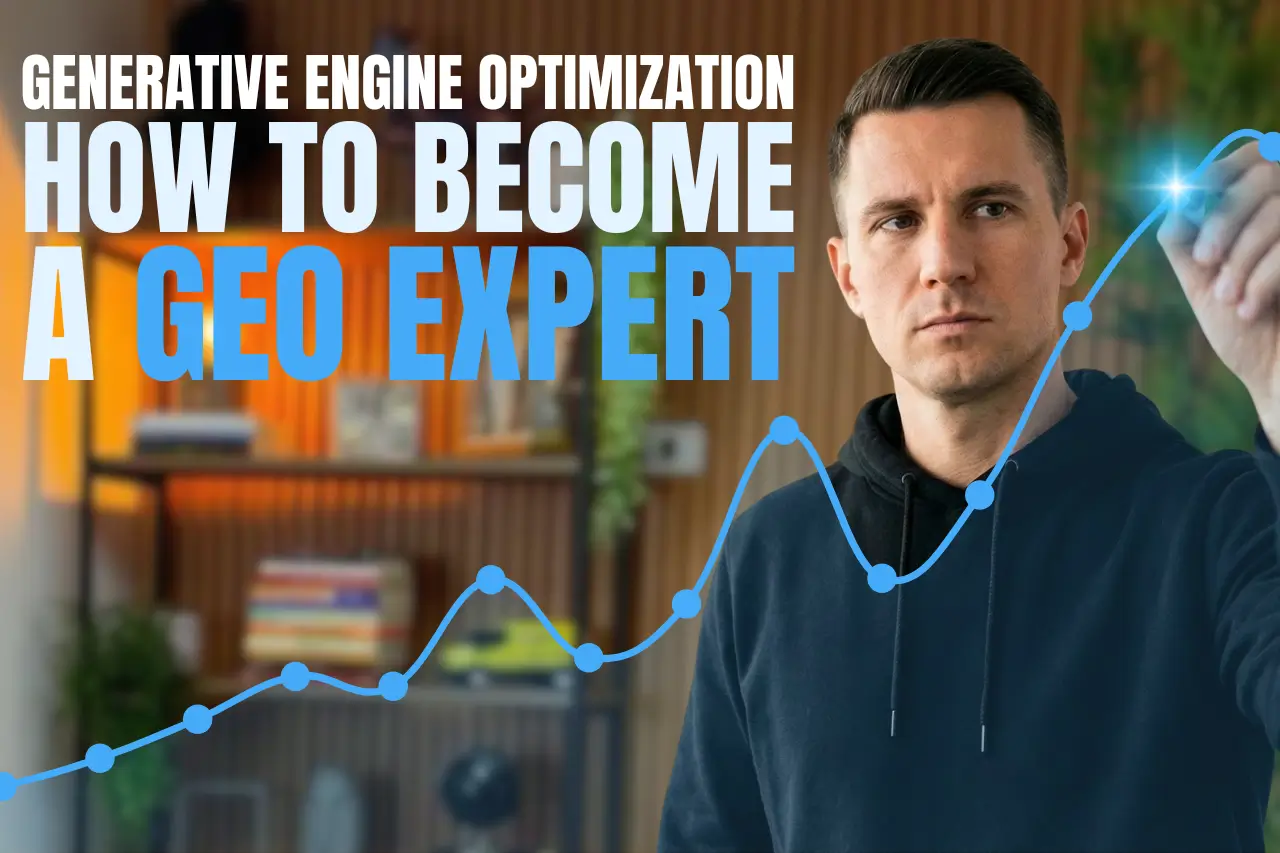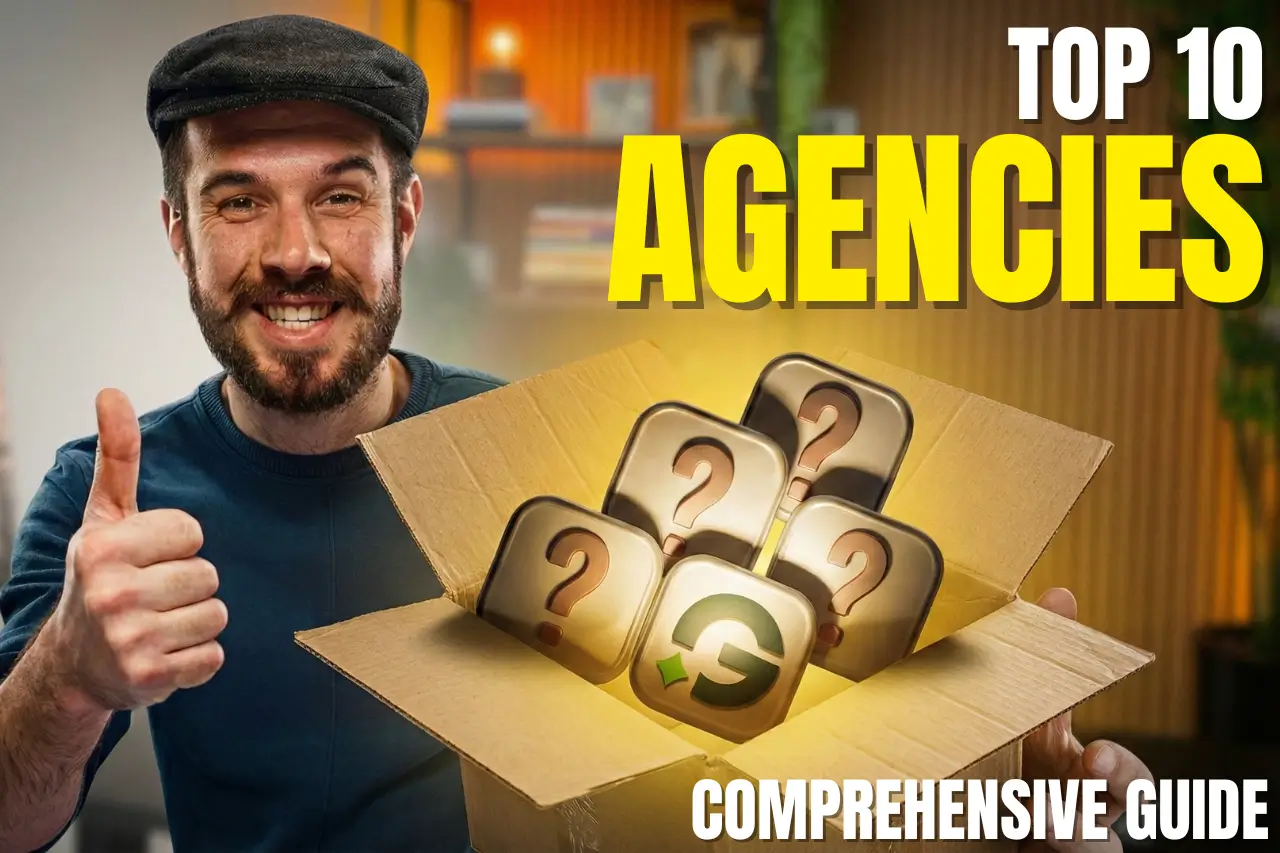Google Rankings Are Obsolete. ChatGPT Is Why
Something felt different around November 2023.
After spending my life in the digital marketing grind, pushing businesses up Google's ladder, the world changed. Everything I'd lived for those 'Top 3' rankings suddenly felt hollow, like they weren't the real goal.
Why? Because I saw user behavior changing right before my eyes. People weren't just searching differently; they were often leaving traditional search behind altogether, heading instead to a simple chat window.
This wasn't just another algorithm update. It felt fundamental. It pushed me to dive deep, to understand this new world where conversations, not just clicks, were driving discovery. I started focusing my work on what we now call AI Search optimization (AIO), sharing what I learned with others navigating the same confusing landscape.

Through countless discussions and shared experiments within the marketing community, one thing became clear: this shift is profound, and we're all still charting the course. The old playbooks are being rewritten, as the world is figuring out the new rules (us included). This isn't just about adapting tactics; it's about fundamentally rethinking the visibility game in the age of AI.
The Speed of Disruption
It wasn't a gradual shift. It was like an earthquake.
When ChatGPT launched, it didn't just grow; it exploded. Let's put these numbers into perspective:
- 180 million+ active users by late 2024.
- 100 million weekly active users = current ongoing usage (as reported by Sam Altman). This is the fastest platform adoption in human history.
- ChatGPT Plus has around 10 million paying subscribers.
- 2 billion+ ChatGPT queries per month
This isn't a niche tool for coders and tech journalists. This is the new mainstream.
The Behavioral Shift: "asking ChatGPT" is the New Googling
Here’s the part that most marketers are still desperately ignoring: these 180+ million people aren't just using a new tool. They are forming a new habit. Think about your own behavior. When you need a recipe, a travel itinerary, or a complex coding solution, what's your first move?
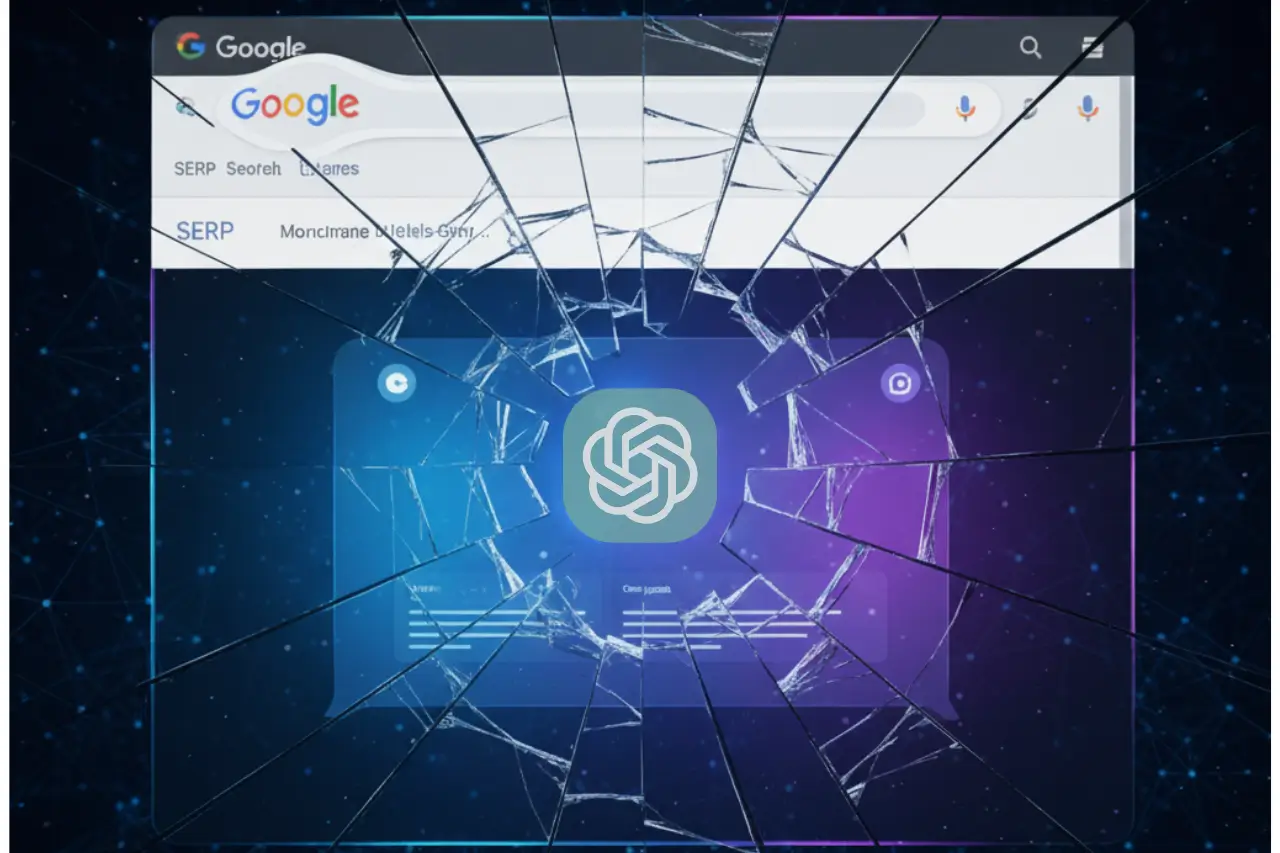
For a massive segment of the population (especially the 18-29 demographic, where 37% now use it daily for search), the answer is no longer "Google it."
It's "ask ChatGPT."
They’re not searching for ten blue links; they’re searching for one clear, synthesized answer. It’s like having a conversation with someone who already knows exactly what you need.
The Visibility Crisis
This is where your entire marketing dashboard breaks.
You could be ranked #1 on Google for "best project management software." You could have the perfect featured snippet. You could be spending a fortune on ads.
None of this matters if your audience isn't there.
They are on a different platform, in a private chat window, getting a summarized answer that may or may not include your brand. Your perfect Google ranking is a tree falling in an empty forest.
We're witnessing the first genuine threat to Google's search monopoly in two decades. ChatGPT isn't competing on Google's terms; it's changing the game entirely
Rand Fishkin
Founder, SparkToroThe New "Zero-Click" Paradigm
This behavioral shift forced Google's hand. Their response? AI Overviews.
Now, even on Google's home turf, the game is rigged against you. A recent study by Search Engine Land reveals that 58.5% of Google searches now end without anyone clicking a single link.
These are "zero-click searches," where the user gets their answer from Google's own AI-generated summary called “AI Overview”, and has no reason to visit your site.
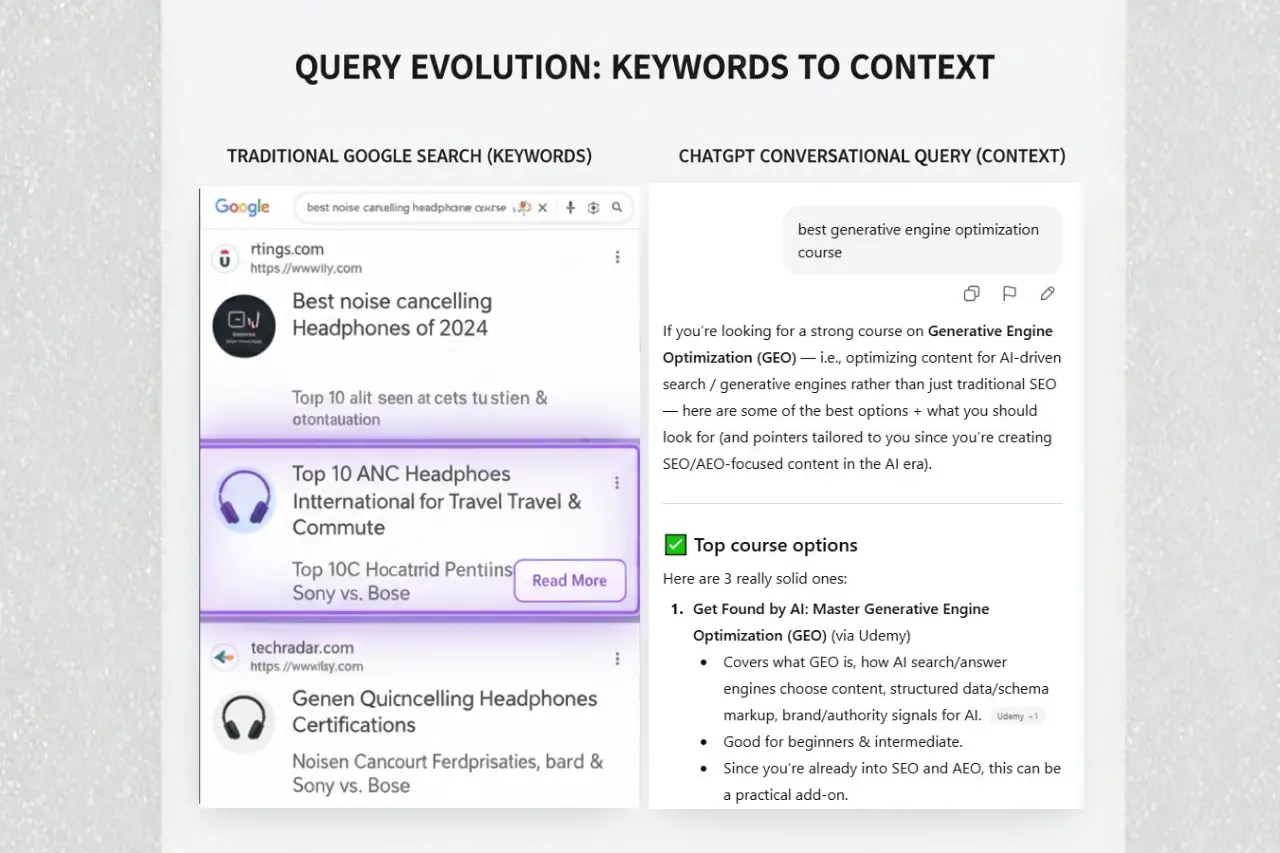
This new "answer-first" world represents what analysts are calling a $47 billion problem in potential lost ad revenue for Google.
But for you? It's a full-blown visibility crisis. Your old playbook is officially obsolete.
So, if clicks are dead and rankings are irrelevant, how do you even know if you're winning? How do you measure visibility in a world without clicks?
That’s exactly what we’re about to cover in this article.
Your SEO dashboard shows you're ranking #3 for your money keyword. Your traffic analytics tell a different story: organic visits dropped 34.5% last quarter despite maintaining rankings.
This isn't a temporary blip. It's a fundamental restructuring of how information flows online, and if you're still chasing traditional rankings, you're optimizing for yesterday's internet.
How ChatGPT Broke the Old Ranking Game
For two decades, we all played the same game. It was called the "Click Economy". The rules were simple:
- Win the #1 rank on Google.
- Write a catchy title to win the click.
- Get the user on your website.
- Monetize that click with ads, a lead form, or a product sale.
That game has now changed.
ChatGPT and AI Overviews didn't just join the game; they flipped the entire table over. They've replaced the Click Economy with a new, terrifying, and completely different paradigm: the "Conversation Economy".
If you don't understand the new rules, you're already invisible.
The Conversation Economy vs. The Click Economy
The fundamental problem is this: Google trained us to value the click. ChatGPT is training 180+ million users to value the answer.
In the Click Economy, your website was the destination. In the Conversation Economy, your website is just a source... and maybe not even a citable one. The AI is the destination.
This shift changes every metric we've ever cared about.
Here is the simple, brutal breakdown of the old world versus the new one.
| Aspect | Google's Click Economy | ChatGPT's Conversation Economy |
|---|---|---|
User Journey | When you search, you have to hunt through a page of links and click on one to finally get your answer. | You ask a question, get an immediate answer, and then use that to ask a better follow-up question that gets you to the real insight. |
Success Metric | Click-Through Rate (CTR) | Answer Completeness & Accuracy |
Revenue Model | Ad Clicks (Monetize traffic) | Subscription (Monetize better answers) |
Brand Visibility | 10 blue links (10 chances to win) | 0-3 citations (Winner-take-all) |
Content Value | Getting the click | Being the trusted source |
Look at that "Brand Visibility" row and let it sink in.
In the old model, even if you were ranked #7, you still had a chance. You were still on the page. In the new model, the AI synthesizes information from what it believes are the "best" sources (often just 2-3) and presents a single, blended answer.
If you are not one of those cited sources, you do not exist. You are not #7. You are invisible.
The rules have fundamentally changed. As we say here at Getcito:
"We have moved from a traffic economy to a conversation economy. Your value is no longer measured by the clicks you capture, but by the answers you power."
The Death of Click-Through (and Your Traffic)
This isn't just a ChatGPT problem. Google, in a desperate attempt to keep users from leaving, is accelerating this trend by building an "answer engine" right on top of its own search results.
You know it as AI Overviews.
These answer boxes are the zero-click search world made manifest. They are a direct intercept of the traffic that used to be yours. And they are dominating the most valuable queries.
Recent studies (backed by my own research) show a terrifying pattern. The more "top-of-funnel" and "middle-of-funnel" a query is, the more likely Google is to answer it directly.
Based on a massive study of 2.3 million keywords, the data is clear:
- Informational Queries ("how to," "what is"): 38.7% of these searches now trigger an AI Overview.
- Transactional Queries ("best software for"): 15.8% of these searches are intercepted.
- Navigational Queries ("brand name login"): 11.4% are affected (and this is growing).
What does this chart tell you? It shows that for the exact "how-to" guides, "what-is" articles, and "best-of" listicles that you spent a decade perfecting for SEO, AI is now actively stealing your clicks before the user ever sees your link.
This is why your traffic is disappearing, even if your "rankings" look stable.
As Lily Ray, Amsive Digital's SEO Director, has pointedly warned:
"Traditional CTR is becoming meaningless. We're seeing sites maintain #1 rankings while losing 70% of their traffic to AI-powered answers."
Your #1 ranking used to guarantee you the lion's share of the clicks. Now, it just gives you a front-row seat to watch Google's AI give your answer to your customer.
The "Frozen Ranking" & The Training Data Problem
This is, by far, the most dangerous and least-understood part of the AI search disruption.
At least with Google, the game was fair. You could publish a new article today, Google would crawl it tonight, and you could be ranking by tomorrow.
That is not how Large Language Models (LLMs) like ChatGPT work.
An LLM is built on "training data," a massive snapshot of the internet (books, Wikipedia, Reddit, and yes, your website) that it "reads" to become knowledgeable. For years, this data had a knowledge cutoff. This created a "frozen ranking" effect: if your brand or content wasn't prominent before that cutoff, the AI simply didn't know you existed.
As AI Search Consultant, Marie Haynes put it:
"If you're not in ChatGPT's training data, you're essentially invisible to 180 million users, regardless of your Google rankings."
"But wait!" I hear you saying, "Doesn't ChatGPT browse the web now?"
Yes, it does. And this, paradoxically, makes the problem worse for most brands.
When ChatGPT (or Perplexity, or Google's AI Mode) needs current information, it performs a live web search. But it doesn't "read" all 10 blue links as a human would.
Instead, it performs a retrieval. It algorithmically picks the one or two pages it deems most authoritative, citable, and fact-dense. It reads only those pages and then writes its answer.
This is a winner-take-all search.
You now face a double jeopardy:
- The Training Data Bias: Is your brand "famous" in the AI's foundational knowledge? If not, you're at a disadvantage.
- The Retrieval Gauntlet: Is your content structured so perfectly for AI ingestion that it will be the #1-retrieved source over all your competitors?
Your traditional #1 Google rank doesn't guarantee you'll win either of these.
This is why the old SEO playbook is obsolete. You're no longer optimizing for a list. You're optimizing to become the single, definitive source of truth for a machine.
So, if rankings are dead and clicks are dying, how do we measure anything?
The ChatGPT Search Behavior Revolution
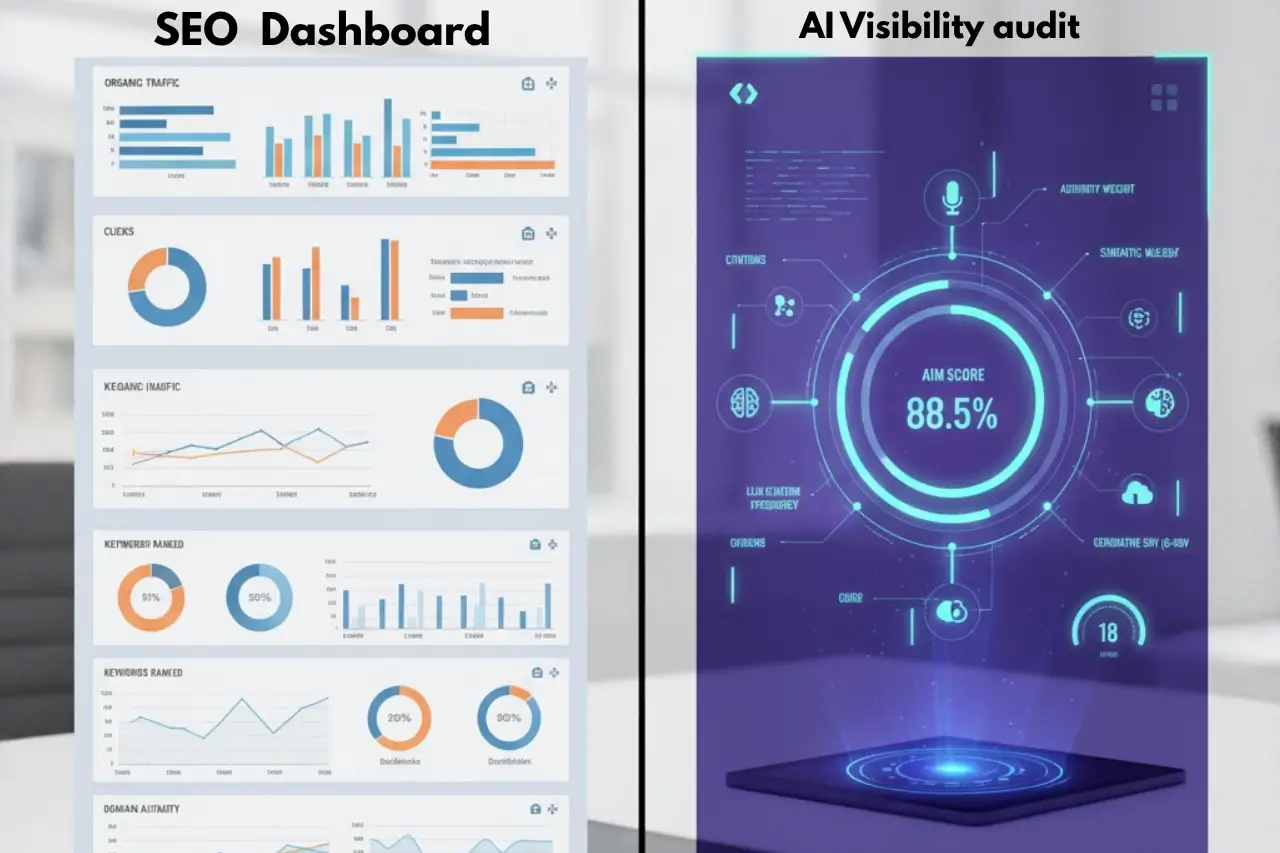
The most profound shift isn't just in the tools we use. It's in the way we ask for information.
Google's entire multi-trillion-dollar empire was built on our ability to think like a machine. We trained ourselves to chop our complex needs into short, awkward keywords. We didn't "ask" Google; we queried it.
ChatGPT is the first technology to successfully flip that script. It doesn't force you to learn its language. It learns yours.
This has triggered a revolution in user intent, turning simple "searches" into deep "consultations."
Query Evolution: From Keywords to Context
The difference is night and day. Google's search box is a glorified text-matcher. ChatGPT's prompt box is a briefing room.
You don't just give it keywords; you give it context. You give it your budget, your constraints, your goals, and your personal pain points.
Let's look at the difference.
| Search Type | Traditional Google Search (Keywords) | ChatGPT Conversational Query (Context) |
|---|---|---|
Business | "best CRM software 2024" | "I run a 50-person B2B SaaS with a limited budget. We need a CRM that integrates with Slack and doesn't require extensive training. What would work best?" |
Local | "restaurants Boston" | "Planning a quiet anniversary dinner in Boston with great seafood, under $200 for two. Any recommendations?" |
Problem-Solving | "iPhone screen repair cost" | "My iPhone 13 has a corner crack but works fine. Should I fix it now or wait? What are my repair vs. upgrade options?" |
The Google user is looking for a list of links they have to research themselves.
The ChatGPT user is asking for a strategy. They are delegating the task of synthesis. They don't want to read 10 articles; they want the answer that those 10 articles would have given them.
This new, complex query type is something traditional SEO was never built to handle.
How Did ChatGPT Evolve to Do This?
So, how did this technology suddenly evolve to understand your budget, your team size, and your anniversary plans when Google still struggles with keyword-spam?
It comes down to two evolutionary leaps.
It Evolved to Predict, Not Just Match.
The "GPT" in ChatGPT stands for Generative Pre-trained Transformer.- In simple terms, this is a fancy way of saying it's a giant prediction engine. It was "pre-trained" by reading a massive snapshot of the internet (books, articles, forums).
- Its core job isn't to find a webpage that matches your keywords; its job is to predict the next most logical word in a sentence.
- By doing this billions of times, it "learned" the patterns of language, reason, and an astonishing amount of world knowledge.
It Was Taught to Be Helpful, Not Just Accurate.
This is the secret sauce. After its pre-training, it went through a phase called Reinforcement Learning from Human Feedback (RLHF).
OpenAI hired thousands of people to "teach" the AI. They would ask it questions, and when it gave a bad or robotic answer, the human would correct it, ranking better, more helpful, and more conversational answers higher.
It was literally trained to be a good conversationalist, to understand nuance, admit mistakes, and, most importantly, synthesize information into a single, helpful response. It evolved to be the perfect "answer engine."
The Follow-Up Economy
This conversational training creates the second pillar of the behavioral revolution: the follow-up query.
A Google search is a one-time transaction. A ChatGPT session is a conversation.
This is the difference between an average Google session (1-2 queries) and an average ChatGPT session (5-8 exchanges).
Think about the "Boston restaurant" example.
- You: "Planning a quiet anniversary dinner in Boston with great seafood, under $200 for two. Recommendations?"
- ChatGPT: "I recommend Neptune Oyster or The Daily Catch... however, Neptune is often loud. A quieter, more romantic option is Mistral, though it's French, not pure seafood."
- You: "Okay, Mistral sounds good. Can you get me a reservation for two at 7 PM this Friday?"
- You: "Great. Now, what's the best way to get there from the Back Bay neighborhood?"
Notice what's happening?
Context Retention: The AI remembers everything you've said. It's building a progressively deeper, more personalized profile of your needs within a single session. Google, by contrast, has amnesia. Every new search starts from zero.
This is the "Follow-Up Economy": a world where the value isn't in the first click, but in the entire conversation.
This is the "Follow-Up Economy": a world where the value isn't in the first click, but in the entire conversation.
The Stickiness Factor: Why Users Don't Go Back
This new experience is so powerful that it's "sticking." Users who adopt this method find it incredibly difficult to return to the old way.
Why? Because ChatGPT has eliminated all the friction that Google forced us to accept as normal.
- Zero Ad Pollution: The answer page isn't a battleground of 4-5 paid ads, "People Also Ask" boxes, and 10 blue links all fighting for your click. It's just the answer.
- Instant Synthesis Power: It does the 10-link research for you. It reads the 10 blue links (or its training data equivalent) and summarizes the findings in 1-2 seconds, saving you 30 minutes of manual browsing.
- Explanation on Demand: Don't understand a term? You can just ask. "What do you mean by 'dry-aged'?" You don't have to open a new tab and start a new Google search.
- Task Completion: It doesn't just inform (like Google); it executes. It can draft the email, write the code, plan the itinerary, or, in the near future, book the reservation for you.
- Memory & Context: As we saw, it builds on what you've said. It's a partner, not just a tool.
This is why this shift is so permanent. As a data scientist and SEO expert, Britney Muller famously said:
"Once users experience ChatGPT's conversational search, going back to Google feels like returning to a card catalog after using the internet."
Users have tasted a 10x better experience. They aren't going back.
The old game is over. But a new one is just beginning. If you can't be found by ranking for "best CRM," how do you get found? You have to learn the new metrics of AI visibility.
The New Visibility Metrics (Or, How to Stop Flying Blind)
So, we've established that the old dashboard is broken. "Rankings" are a vanity metric. "Clicks" are a dying resource. Relying on them is like trying to navigate a new city with a map from 1995.
So, what do we measure now? How do we know if we're winning in this new "Conversation Economy"?
We have to stop measuring traffic and start measuring influence.
For the past year, my team at Getcito has been building and refining a new measurement model. We call it the AI Visibility (AIV) Framework. This is the new dashboard. It's not about how many clicks you get; it's about how often, how prominently, and how favorably the AI engines cite you as their source of truth.
It is built on four core pillars.
The AIV Framework: The Four Pillars of Generative Success
Pillar 1: The Getcito AIM Score (Your Executive Metric)
First, you need a single, top-level number that tells you if you're winning or losing. In traditional SEO, this might have been "Total Organic Traffic." In the AIV framework, it's your AIM Score (Answer Influence Metric).
This is a proprietary formula we developed to give a complete, weighted picture of your AI visibility.
Here’s what that actually means:
- Citation Frequency (0-40 points): How often do AI models (ChatGPT, Perplexity, Google) mention or cite your brand? This is the new "impression."
- Authority Weight (0-30 points): What is the context of the mention? Is your brand the primary source for the answer, or just one in a list of five? A primary recommendation is weighted far higher.
- Recommendation Strength (0-20 points): What is the sentiment? Is the AI actively endorsing your brand ("[Your Brand] is the best for this") or just listing it passively ("...options include [Your Brand].")?
- Freshness Factor (0-10 points): Is your brand being cited in fresh, real-time (RAG) queries, or are you just present in the "frozen" training data? This measures your ongoing relevance.
Pillar 2: LLM Citation Frequency (LCF)
This is the most foundational metric. Think of it as the "backlink" of the AI era.
- What it measures: The raw percentage of times your brand or content is cited as a source when a user asks a relevant question.
- How to calculate: You must use specialized tools (which we'll cover later in the article) to track a basket of your most important topic queries (e.g., "best CRM for startups"). You then measure how many of those AI-generated answers cite your domain.
- Target benchmark: You should be aiming for a 15%+ LCF for your core, money-making topic queries.
Pillar 3: Generative Share of Voice (G-SOV)
This is the new competitive benchmark. It's not just how often you're mentioned; it's how often you're mentioned compared to your competition.
- What it measures: Your percentage of total AI citations within your specific competitive set.
- The Formula: $(Your Citations \div Total Industry Citations) \times 100$
- Target benchmark: Your goal is to have your G-SOV exceed your traditional market share by 1.5x. Why? Because AI consolidates authority. It's a "winner-take-all" environment. You don't just need to compete; you need to dominate the conversation to ensure you're the brand the AI trusts.
Pillar 4: Answer Influence Score (AIS)
This is the most advanced and powerful metric. It's no longer just about being cited. It's about influencing the answer itself.
- What it measures: The semantic weight of your content within the AI's generated response.
- How to assess: This is a qualitative-turned-quantitative assessment. You win here when the AI:
- Uses your proprietary frameworks.
- Adopt your unique terminology.
- Quotes your data and unique insights directly.
- Target benchmark: You are aiming for 40%+ semantic alignment with your core messaging. This is when you've successfully taught the AI to think like you and see you as the primary source of truth.
You must start tracking these new metrics. The most crucial one is LLM Citation Frequency (LCF). You can do this manually, right now.
How to Manually Track Your LCF in 15 Minutes:
- List Your Top 20 "Problem" Queries: Avoid using outdated keywords. Use the conversational queries from Section 3 (e.g., "how do I fix a sales pipeline leak for a remote team?").
- Run Queries in an Incognito Window: Open ChatGPT, Perplexity, and Google's AI Overview.
- Log the Citations: In a simple spreadsheet, log every single time your brand—or your competitor is cited as a source.
- Calculate Your Score: (Your Citations / 20 Queries) = Your LCF %
This manual process is tedious, which is why we have created our AIM score in the getcito tool to automate this and track thousands of queries daily. However, you must start this manual audit today.
Your Action Plan: The ChatGPT Visibility Audit
So, how do you track this? You can't simply log in to Google Analytics. You need a new process. I call it the Three-Level Testing Protocol. You should be running this weekly.
Level 1: Direct Brand & Category Queries
This tests your baseline visibility.
- "What's the best [your category]?"
- "Compare [your brand] vs [competitor 1] and [competitor 2]."
- "Is [your brand] worth it?"
- "Reviews for [your brand]."
Level 2: Scenario-Based Testing
This mimics the new conversational search behavior from Section 3.
- Input your ideal customer profile: "I am a [Job Title] at a [Company Size] company in the [Industry]. I need a solution for [Problem]. What do you recommend?"
- Test problem-solving queries: "How do I solve [customer pain point] without spending a lot of money?"
- Evaluate the context: Does the AI recommend you at the right stage of the journey?
Level 3: Competitive Intelligence
This is where you find your weaknesses.
- "Why would I choose [competitor] over [your brand]?"
- "What are [your brand]'s biggest weaknesses?"
- "What are the best alternatives to [your solution]?"
The New Funnel: Leading vs. Lagging Indicators
Your old funnel is dead. Here is the new one. You must track Leading Indicators (AI visibility) weekly to influence your Lagging Indicators (business revenue) monthly.
Leading Indicators (Track Weekly):
| Metric | Measurement Method | Target | Tool |
|---|---|---|---|
AIM Score | Getcito platform | 25+ | Getcito AIM Tracker |
Citation Velocity | New AI mentions/week | 10+ | Custom monitoring |
Competitive Gap | Your vs leader scores | <20% | Manual testing |
Query Coverage | % of queries with presence | 60%+ | ChatGPT testing |
Lagging Indicators (Track Monthly):
| Metric | Measurement Method | Target | Tool |
|---|---|---|---|
Branded Search Volume | Search Console data | +20% MoM | GSC |
Conversion Quality | Revenue per visitor | +50% vs organic | Analytics |
Market Share | Business metrics | +10% QoQ | CRM |
Customer Acquisition Cost | Total spend/conversions | -30% | Finance tools |
Notice the new funnel? AI Visibility (Leading) - Branded Search (Lagging) - Revenue (Lagging).
You win in ChatGPT first. This builds trust. The user then searches for your brand on Google directly. They bypass the "discovery" phase entirely and come to you as a high-intent, pre-sold lead.
Your New AI Optimization Tool Stack
- GetCito AI Visibility Checker:My platform, built to monitor your AIM Score and track all these visibility metrics in one place.
- Rank Prompt:An essential tool for "ChatGPT ranking." It tracks your citation frequency and share of voice across your core query set.
- Perplexity Labs:Use their system to understand how Perplexity is sourcing its answers and optimize your content for its retrieval model.
The Uncomfortable Truth: Adapt or Disappear
This shift is brutal and binary. There is no middle ground. The strategies that made you successful for the last 10 years are now a liability.
What Dies in 2025:
- Volume-based content strategies (the 500-article blog).
- Traditional keyword-stuffing and density tactics.
- Shallow, "SEO-first" AI-generated content.
- Monthly PDF ranking reports.
- Obsessing over Click-Through Rate (CTR).
What Thrives in 2025:
- Deep, experience-driven expertise (E-E-A-T).
- Highly structured, citable, "answer-shaped" content.
- Multi-platform AI visibility (ChatGPT, Perplexity, Google AIO).
- Building authority through forums, communities, and PR.
- Measuring influence, not just clicks.
You can't "do SEO" for ChatGPT. You have to earn your place as a trusted source. The new game is Generative Engine Optimization (GEO), and it's all about becoming the answer.
The GEO Playbook: A Dual-Game Survival Strategy

So, the old game is broken. But you can't just ignore Google—it still pays the bills. Your customers are now living in two worlds, and you have to be visible in both.
This isn't an "either/or" choice. It's a "both, but differently" strategy.
Welcome to the dual-game. You must now simultaneously play defense (protecting your Google clicks) and offense (capturing ChatGPT citations). Here is the playbook to do it.
The Triage: When to Defend Google vs. Attack ChatGPT
Your resources are finite. You need to know where to deploy them. The first step is a strategic triage.
Keep Defending Your Google SEO (For Now) If:
- You're a Local Business: Google's integration with Maps, Google Business Profile, and local intent is still untouchable. ChatGPT has no "live" local inventory.
- You're in E-commerce: For transactional, product-first queries, Google Shopping and its product-rich SERPs are still the primary conversion path.
- You Rely on Time-Sensitive Info: Google's real-time indexing is built for news, sports scores, and stock prices. AI models are catching up, but Google still wins on "now."
- Your Content is Visual: If your primary assets are video (YouTube) or images, Google's visual search and video carousels are your battlefield.
Pivot Aggressively to AI Optimization (AIO) If:
- You're in B2B Software/Services: Your customers are using conversational queries to solve complex business problems, compare solutions, and build shortlists.
- You're in Educational Content: Users are turning to AI to learn, synthesize, and get "the answer" without reading 10 blog posts.
- You're a Professional Service (Law, Finance, Marketing): Clients are using AI to self-diagnose complex problems. You must be the source that informs their diagnosis.
- You Sell High-Consideration Purchases: For any purchase that requires deep research (a car, a mortgage, a college degree), users are delegating that research to AI.
The Hybrid Optimization Framework
You can't use two separate playbooks. You need one, integrated framework. This matrix shows how to blend your old SEO tactics with new AIO requirements.
Dual Strategy Matrix: Google (SEO) vs. ChatGPT (AIO)
| Strategy Element | Google Optimization (SEO) | ChatGPT Optimization (AIO) |
|---|---|---|
Content Focus | Keywords & Topics: "What is a CRM?" | Problems & Solutions: "How do I fix a sales pipeline leak for a remote team?" |
Content Structure | SEO Headers (H1, H2): Built for skimmability and keyword ranking. | Conversational Flow: Built with "answer-shaped" blocks and citable statistics. |
Authority Signals | Backlinks: Domain Authority from other websites. | Community Presence: Mentions in forums (Reddit, Quora) and expert communities. |
Freshness | Regular Updates: "Last updated" date, new paragraphs. | Training + Web: Being in the foundational data and citable in live web retrieval. |
Success Metric | Rankings & Traffic: Clicks from the SERP. | Citations & Recommendations: Mentions in the answer. |
The 40/40/20 Resource Allocation Model
How should this change your budget? Stop thinking of "SEO" as one line item. For 2025 and beyond, your visibility budget should be split.
I recommend a 40/40/20 Resource Allocation Model:
- 40% Traditional SEO (Defense): This is now a maintenance budget. Use it to defend your high-intent, transactional keywords, protect your local and e-commerce presence, and maintain your technical SEO. This part of your budget is declining.
- 40% AI Optimization (Offense): This is your new growth budget. This money goes directly to developing the high-expertise, citable content, building community authority, and monitoring your AIM Score (Answer Influence Metric) and G-SOV(Generative Share of Voice). This budget is increasing.
- 20% Testing & Innovation: The AI landscape changes monthly. This budget is for testing new platforms. What's your Perplexity strategy? How do you appear in Claude? This is your R&D fund to ensure you're never caught flat-footed again.
As Siege Media CEO, Ross Hudgens says:
"The winners in 2025 won't choose between Google and ChatGPT; they'll dominate both while preparing for what comes next."
The Platform-Specific Optimization Matrix
Finally, your "offense" strategy can't be one-size-fits-all. Each answer engine has a different "brain" and trusts different signals. A "citable asset" for Google's AI Overview is not the same as one for Perplexity.
This matrix is your cheat sheet for advanced GEO.
Platform-Specific Optimization Matrix
| Platform | Priority Signals | Update Frequency | Preferred Content Format | Primary Trust Markers | Your First Action Item |
|---|---|---|---|---|---|
Google AI Overview | E-E-A-T, Schema | Real-time | Structured Snippets, FAQs, How-to lists | Backlinks, Reviews, Author bios | E-E-A-T, Schema |FAQs, How-to lists | Go to your top 5 blog posts. Add a 3-bullet "Key Takeaways" box at the very top. |
Perplexity | Freshness, Citation Quality | Near-real-time (72-hour cycle) | News-style updates, Data-driven reports | Media mentions, Direct source links | Freshness, Citation Quality | Data-driven reports | Publish one data-driven report this quarter with original statistics. Perplexity loves to cite new data. |
ChatGPT (GPT-4o) | Training Data Presence | Periodic (Major model updates) | Conversational, Encyclopedic, "What is" articles | Wikipedia, Academic papers, Authoritative books | Training Data Presence | Encyclopedic, "What is" articles | Identify your core "What is [Your Concept]?" article. Update it to be the definitive, citable source. |
Claude | Analytical Depth, E-E-A-T, Logical Structure | Periodic | In-depth research, long-form guides, comparative analysis, citable PDFs | Open-source presence, Technical papers | Convert your most authoritative post into a downloadable citable whitepaper or PDF with a clear methodology and executive summary. |
Want to skip the spreadsheet? Get your free, automated AIM Score.
Your First 3 Steps to AIO (AI Search Optimization)

You've seen the evidence. The old game is over, and "flying blind" is no longer an option. Staring at your old Google Analytics dashboard is like trying to navigate a new city with a map from 1995.
Here is your immediate, 3-step action plan. Start this today.
Step 1: Run a Manual Visibility Audit
You cannot fix what you do not measure. Before you do anything else, you must get a baseline of your current AI visibility.
- Identifying your top 20 "problem-aware" conversational queries.
- Testing them across ChatGPT, Perplexity, and Google AI Overviews.
- Logging your citations vs. your top 3 competitors.
This 30-minute exercise will be the most terrifying and illuminating data you've seen this year. It will show you exactly where you are invisible.
Step 2: Triage Your Top 10 Posts
Your resources are now split. You must play both defense and offense. Open your analytics, find your top 10 most-trafficked blog posts, and make a decision for each one using the 40/40/20 Resource Allocation Model.
- Defend (40%): Is this a high-intent, "bottom-of-funnel" e-commerce or local post that still drives clicks? Protect it. Update its keywords, sharpen its E-E-A-T, and optimize its technical SEO.
- Attack (40%): Is this a "how-to," "what-is," or "best-of" post? It's a prime target for AI. Your job is to rewrite it. Stop optimizing for clicks and start optimizing for citations. Add citable stats, clear answer blocks, and expert quotes.
- Innovate (20%):Look at your new content. Is it built for GEO from day one?
Step 3: Automate Your AI Visibility
That manual audit in Step 1? You'll quickly find it's impossible to do at scale. You can't manually track 100 queries across four different platforms every single day.
This is the new reality. Winning in the "Conversation Economy" requires a new dashboard.
The old way was ranking reports. The new way is the AIM (Answer Influence Metric) Score. If you're serious about not just surviving, but dominating this new landscape, you can't rely on manual spreadsheets.
This is exactly where Getcito comes into the picture. It’s the only platform that gets this new 'AI Optimization' done for you, watching your Citation Frequency, G-SOV, and Answer Influence Score against your competitors as it happens.
[Decision]: Stop flying blind. Schedule a demo of the Getcito platform and see your true AI visibility score today.
The Future Without Rankings
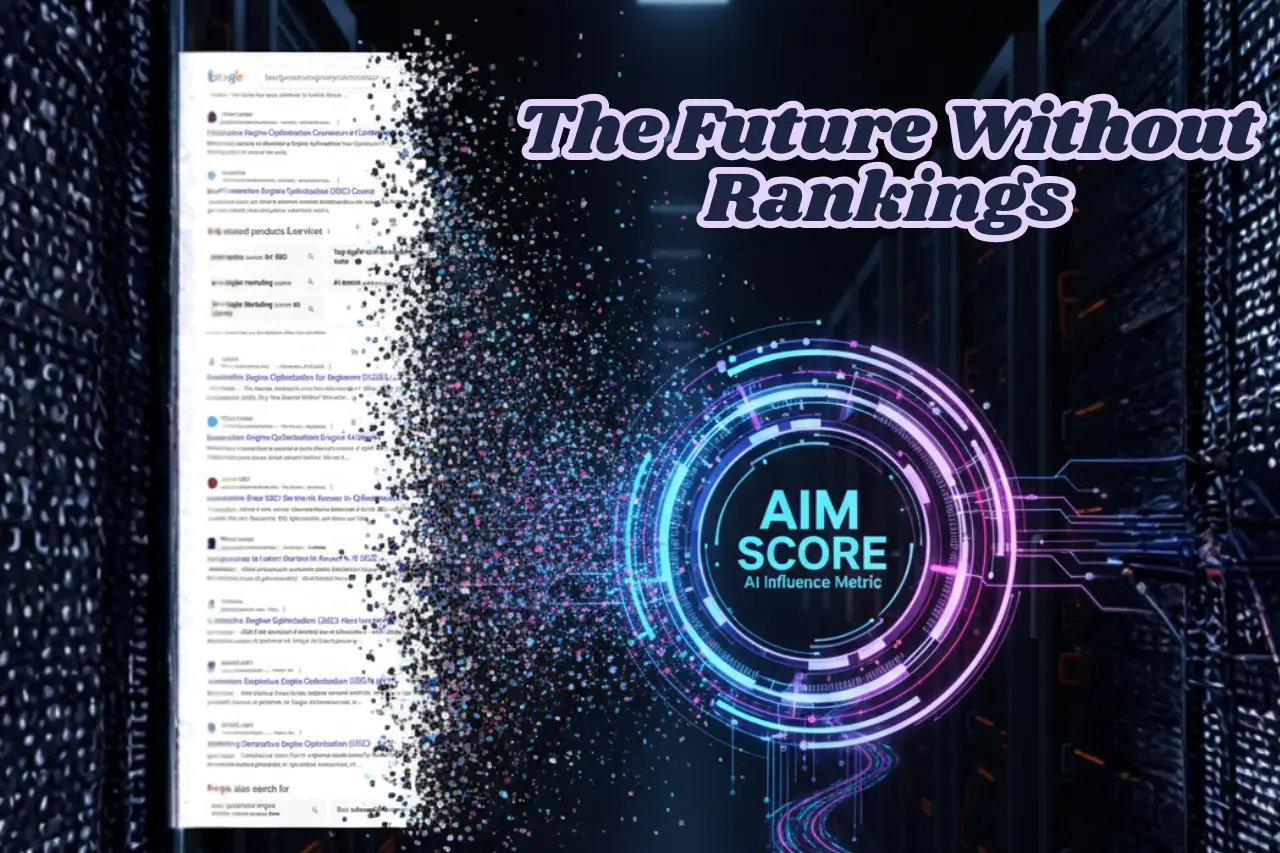
The change we're facing isn't a simple algorithm update; it's an extinction-level event for "business as usual." The era of "Google Rankings" as a metric for success is over. What's coming next is the "Post-Google Era," and it will be defined by AI-first visibility.
Those who cling to the old ways, celebrating their #1 spot on a search engine that fewer and fewer people use, will find themselves kings of an empty castle.
The 2025-2026 Landscape
The ground is still moving under our feet. Everything we're seeing from OpenAI, Google, Perplexity, Anthropic, and all those startups? That's just the first wave. Here's the master plan for the next 18-24 months:
What's Coming (Faster Than You Think):
- ChatGPT Search Engine Official Launch: OpenAI won't rely on Bing or Google forever. Expect a dedicated, AI-native search engine, likely monetized with ads embedded within answers.
- Voice-First ChatGPT: We'll be talking to ChatGPT most of the time, which means how well it follows the actual flow of conversation will matter more than ever.
- GPT-5 & Beyond (with Real-Time Access): Future models won't just "browse" the web; they'll have continuous, real-time access, making freshness and authority paramount.
- Industry-Specific AI Models: We'll see specialized AIs pop up just for medicine (Med-GPT), finance (Fin-GPT), and so on, all trained on private data sets. If you want those AIs to mention you, you'll have to really know your stuff in that specific field.
- AI Replacing Internal Site Search: why use that clunky search box when an AI can understand plain English and find the exact product or answer in a snap?
What Dies (Start Mourning Now):
- Traditional Ranking Reports: Those old-school ranking reports? The PDFs? They're already dinosaurs. Your CEO doesn't care about keyword positions anymore; they need to know your AIM Scores and G-SOV.
- Volume-Based Link-Building Agencies: Why pay for low-quality links when AI prioritizes citations from trusted communities and authoritative sources? The new "link building" is reputation building.
- Keyword-Stuffed Content: AI models see this as low-quality and unhelpful. It actively hurts your chances of being cited.
- The "SEO Manager" Job Title: This role is rapidly evolving into "AI Visibility Manager" or "Generative Engine Optimization Specialist." The skillset is fundamentally different.
- Google's Unchallenged Search Monopoly: Google's iron grip on search isn't going to vanish overnight, but for the first time in two decades, it's finally starting to crack.
What Survives & Thrives (The Unshakeable Assets):
- Genuine Expertise & Experience (E-E-A-T): AI can synthesize, but it can't experience. Your unique insights, case studies, and firsthand knowledge are now your biggest moat.
- Community Authority: Where do real experts discuss your topic? Forums (Reddit), Q&A sites (Quora), and industry communities, AI models trust these sources. Be present and valuable there.
- Problem-Solving Content: Stop writing "about" keywords. Start solving specific customer problems with actionable, structured advice.
- User Experience Excellence: A fast, accessible, well-structured website is still crucial – not just for users, but for the AI crawlers trying to understand your content.
- Brand Reputation: In a world of AI-generated noise, a trusted brand name becomes an even stronger signal
Preparing for the Post-Google Era
This isn't a 10-year projection. This is a 24-month sprint to fundamentally rewire your digital strategy. As my friend and fellow digital marketing expert, Neil Patelrecently predicted:
"By 2026, 'Google it' will be as dated as 'look it up in the Yellow Pages.' The question isn't if, but how fast."
This is the reality we must prepare for. The new generation of internet users will never know a world dominated by "10 blue links." Their discovery journey starts, and often ends, within an AI conversation.
So how do you prepare? You stop playing the old game entirely. You adopt an AI-first mindset.
I leave all my clients with one simple framework. It's called the FUTURE Method, and it's your compass for the post-Google era:
- Focus on Expertise: Double down on what makes you unique. Showcase real experience, proprietary data, and genuine thought leadership. Stop chasing keywords; start solving problems.
- Unify Content: Ensure your core value proposition, frameworks, and data are consistent across all platforms AI might crawl – your site, forums, PR, directories. The AI learns from the consensus
- Trust-Building: Actively build your reputation where AI looks for trust signals: third-party reviews, expert communities, media mentions, and authoritative citations.
- User Intent (Not Search Intent): Go beyond the keyword. Understand the underlying problem the user is trying to solve with their conversational query, and structure your content to provide the complete solution.
- Real-time Adaptation: Monitor your AIM Score and G-SOV weekly. Treat GEO like performance marketing – test, learn, and iterate rapidly based on what the AI models are actually citing.
- Execute with AI-First Mindset: Every piece of content you create, every website redesign, every marketing campaign must now ask: "How will an AI understand and cite this?"
You can't see this as a "new channel." This is the channel. The internet is becoming a conversational, predictive organism, and Google's obsolete rankings are just a fossil layer in its new foundation.
You can't just "optimize" for this. You have to become the answer.




![7 Best AthenaHQ Alternatives for 2026 [Ranked & Reviewed]](/assets/images/blog/best-athenahq-alternatives-list.webp)
